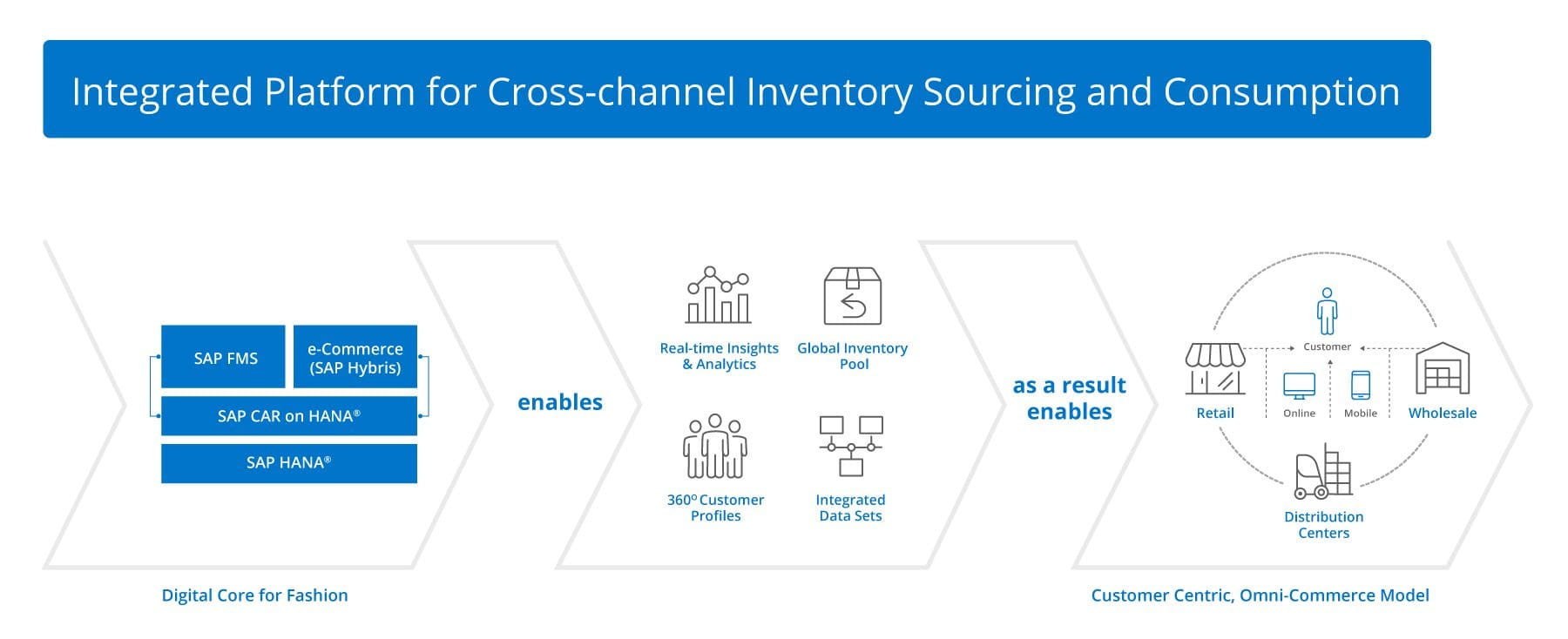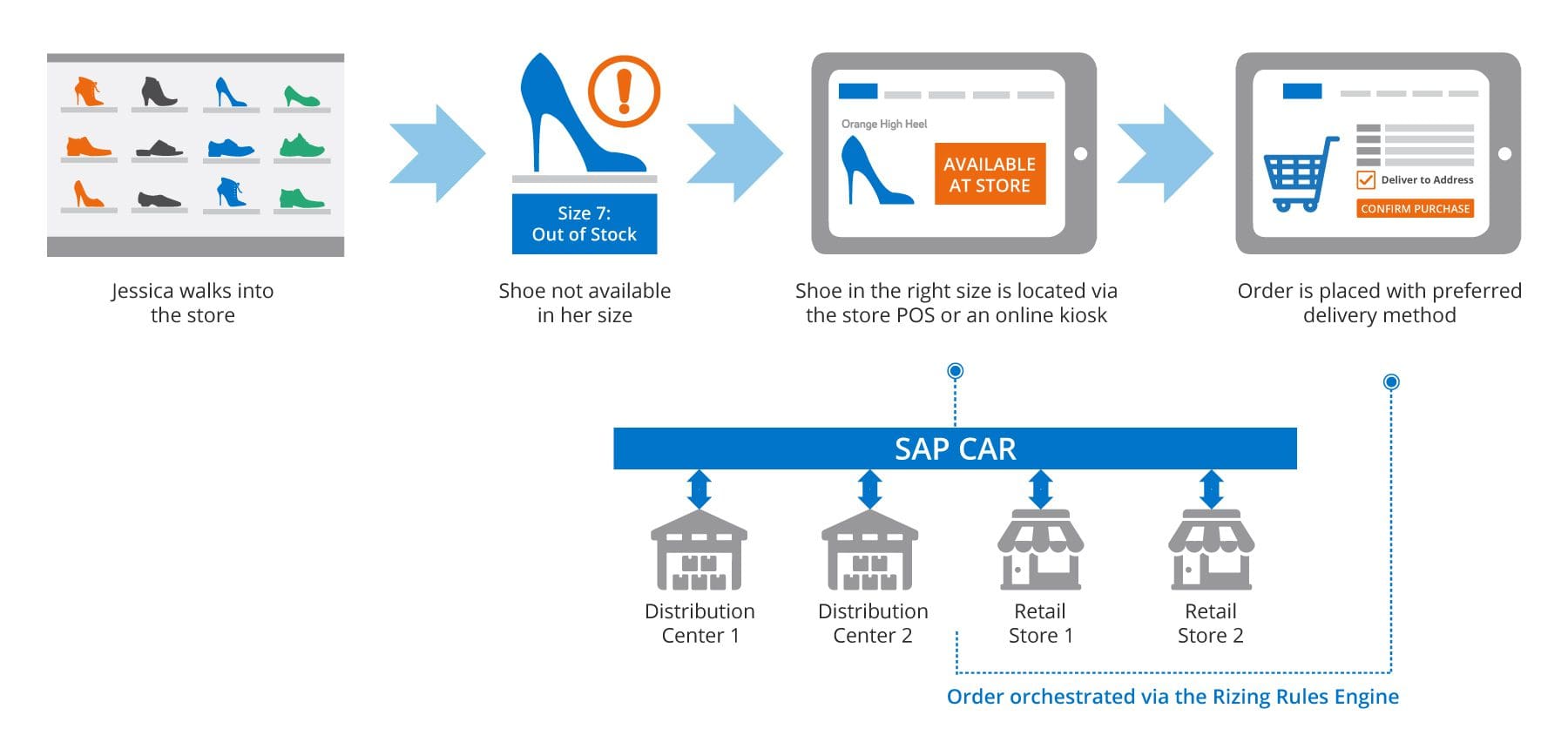In the fashion retail world, every instance of a stock-out represents a failure to fulfill consumer demand.
The ramifications of out-of-stock situations do not end at the initial sale. Other factors include loss of companion sales, inability to salvage future shopping trips, and the potential loss of loyal consumers.
Stock outages have plagued the industry for decades. How can companies avoid it? The answer may lie with your operational backbone – your ERP system.
82% of consumers will substitute and switch brands due to an out-of-stock product. — Marketing Science Journal
In today’s competitive retail fashion industry, 65% of online shoppers have been disappointed by out-of-stocks in the past 12 months. It’s a cost brands simply cannot afford. It’s also a challenge for retailers who rely on manual and slow processes for checking inventory availability.
Recent years have shown advances in POS and other systems that give the associates visibility into nearby stores’ inventory. But usually, even when the out-of-stock item can be found at an in-stock location, there is no effective way to confirm item availability and reserve it for the customer.
The situation gets worse for with the growing demand of consumers requesting granular visibility into inventory availability.
Rather than just showing “in-stock” or “out-of-stock”, consumers now want a retailer to provide actual inventory numbers. If you don’t provide it, they’ll find a competitor that does.
Cutting Through The Complexity
The question facing retailers is – how do they consistently fulfill demand for an out-of-stock item? The best answer is to use an integrated system that has the ability to adjust inventory levels in real-time across their sales channels.
The ability to flexibly source from any channel’s inventory pool to fulfill an order for any other channel is critical.
Brands are redefining consumer engagement by using save-the-sale initiatives that prioritize getting in-demand products to consumers by intelligently sourcing inventory from another in-stock location, regardless of the channel.
The benefits include increased, immediate customer satisfaction, an improved long-term overall shopping experience for the customer, increased operational efficiency, and increased revenue.
However, when it comes to intelligent cross-channel sourcing, legacy or home-grown systems struggle in an attempt to process massive volumes of data required to gain comprehensive inventory visibility across all channels. This is mainly due to fashion companies managing their retail, wholesale and e-commerce channels as separate business units, with disparate inventory pools.
While piecemeal interventions at crucial points in back-end legacy systems have produced useful results for retailers to help manage out-of-stock across channels, it’s becoming clear that an integrated core solution is required to respond to fluctuations in consumer behavior and deliver the right items to consumers.
Enabling Intelligent Cross-channel Sourcing with SAP Fashion Management
With so many potential facets involved in cross-channel sourcing and order management, retailers like The Rockport Group are using SAP Fashion Management, an omnichannel solution that unifies retail and wholesale to reduce stock-outs and gain endless aisle capabilities.
When integrated with an e-commerce solution such as SAP Hybris, and SAP Customer Activity Repository, the trifecta allows a fashion company to combine its B2B and B2C backend systems. This give the company a single view of its inventory and allows a fashion company to run as a single business, rather than separate wholesale and retail businesses.
 Brands that integrate SAP Fashion Management and SAP Hybris will be able to retrieve stock levels in real-time for a more flexible use of inventory across channels. The result is a system that brands can use to fulfill the demand for their products from anywhere through cross-channel inventory consumption.
Brands that integrate SAP Fashion Management and SAP Hybris will be able to retrieve stock levels in real-time for a more flexible use of inventory across channels. The result is a system that brands can use to fulfill the demand for their products from anywhere through cross-channel inventory consumption.
This enables customers to purchase products online or in-store and pick up or return products to stores with ease. When it comes to ‘Save the Sale’ and an out-of-stock situation, SAP FMS offers total inventory visibility to associates to source items in an order from any inventory pool, including inventory held for other channels.
In doing so, fashion retailers can maintain adequate in-stock quantities while eliminating duplicate safety stock, which legacy systems held separately in each inventory pool that often resulted in excess safety stock.
This insight into merchandise at any location, across all channels, at any time is coupled with the ability to orchestrate multiple fulfillment options such as:
- Pick and hold in a store for customer pickup
- Store-to-store transfer for customer pickup
- Ship from DC to store for customer pickup
- Ship to home from a DC
- Ship to home from a store
Let’s look at how SAP FMS helps save the sale in two scenarios:

Save the sale—from the DC
Store associates are provided with visibility into inventory. An in-store kiosk offers associates a convenient mechanism to capture orders for out-of-stock items in the store and trigger a notice to the warehouse. The item is then shipped to the customer’s home.
Save the sale—involving customer pickup at other stores
Store associates have visibility into inventory. Using the in-store kiosk, the associate captures the order for the out-of-stock item and triggers a notice to the selected store to reserve the item. The item will be picked up by the customer.
In these scenarios, built-in segmentation strategies in SAP FMS helps clearly separate inventory across each channel (retail, wholesale and e-commerce). Cross-consumption tactics help retailers prioritize which channel can consume inventory from another in case of stock-outs. Stock protection is in place to ensure items are always available for high priority orders/segments.
One of the key elements tying this all together is our order orchestration rules engine. It helps determine the best site for shipping to the customer – taking into consideration multiple factors such as geo-location.
Turning Stock-outs Into Opportunities
Out-of-stock situations can erode revenue, undermine customer loyalty, and become immediately visible to communities via social media.
It’s clear that customers will buy an out-of-stock item if a store employee can find it at another location.
Although out-of-stock situations may never go away, retailers have a chance to save the sale if they have the ability to flexibly respond and fulfill demand by using all their inventory sources.
Solution Brief
Download our brief on SAP S/4HANA for Fashion and discover how the platform integrates wholesale, retail and e-commerce for a simpler, more successful fashion operation.

